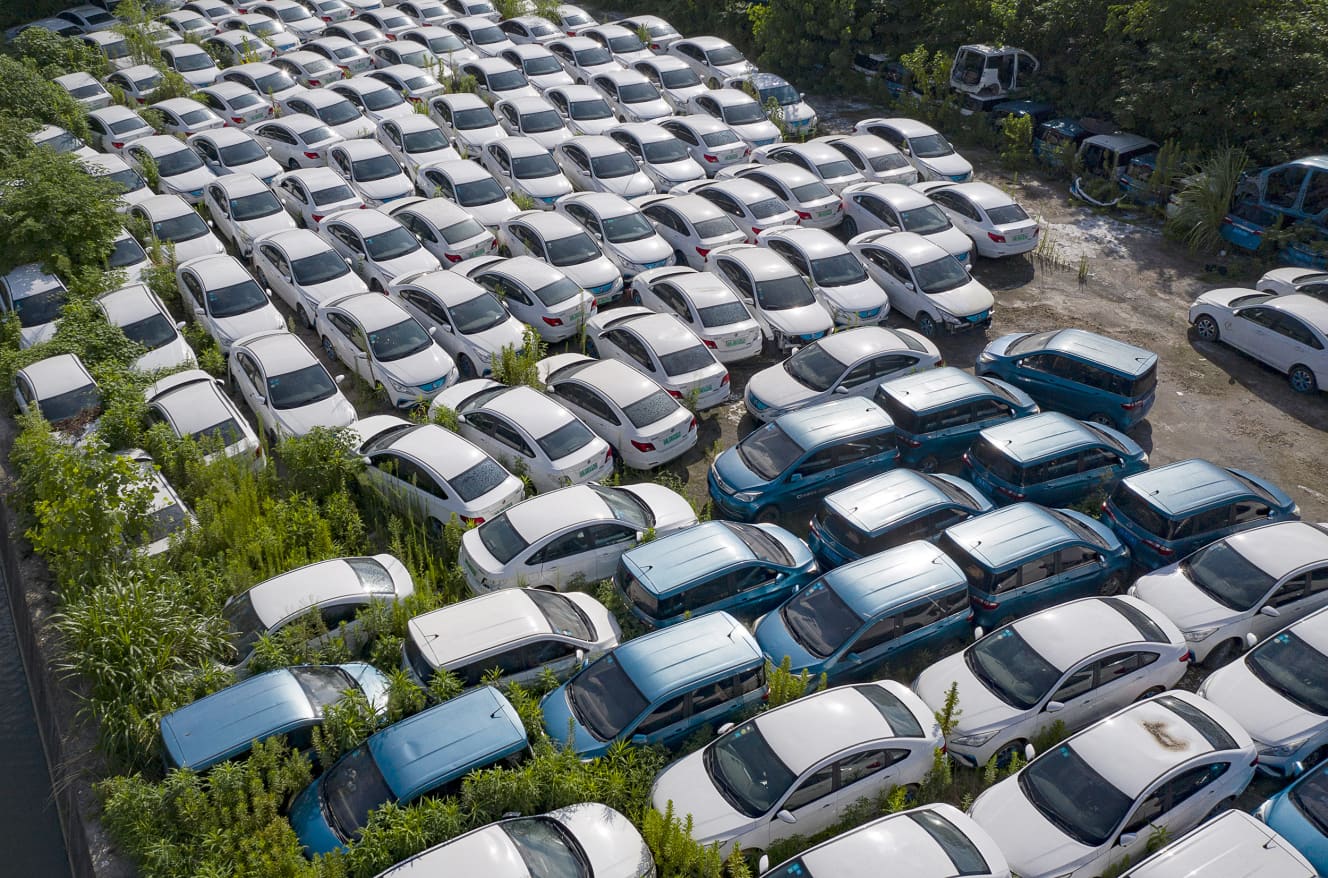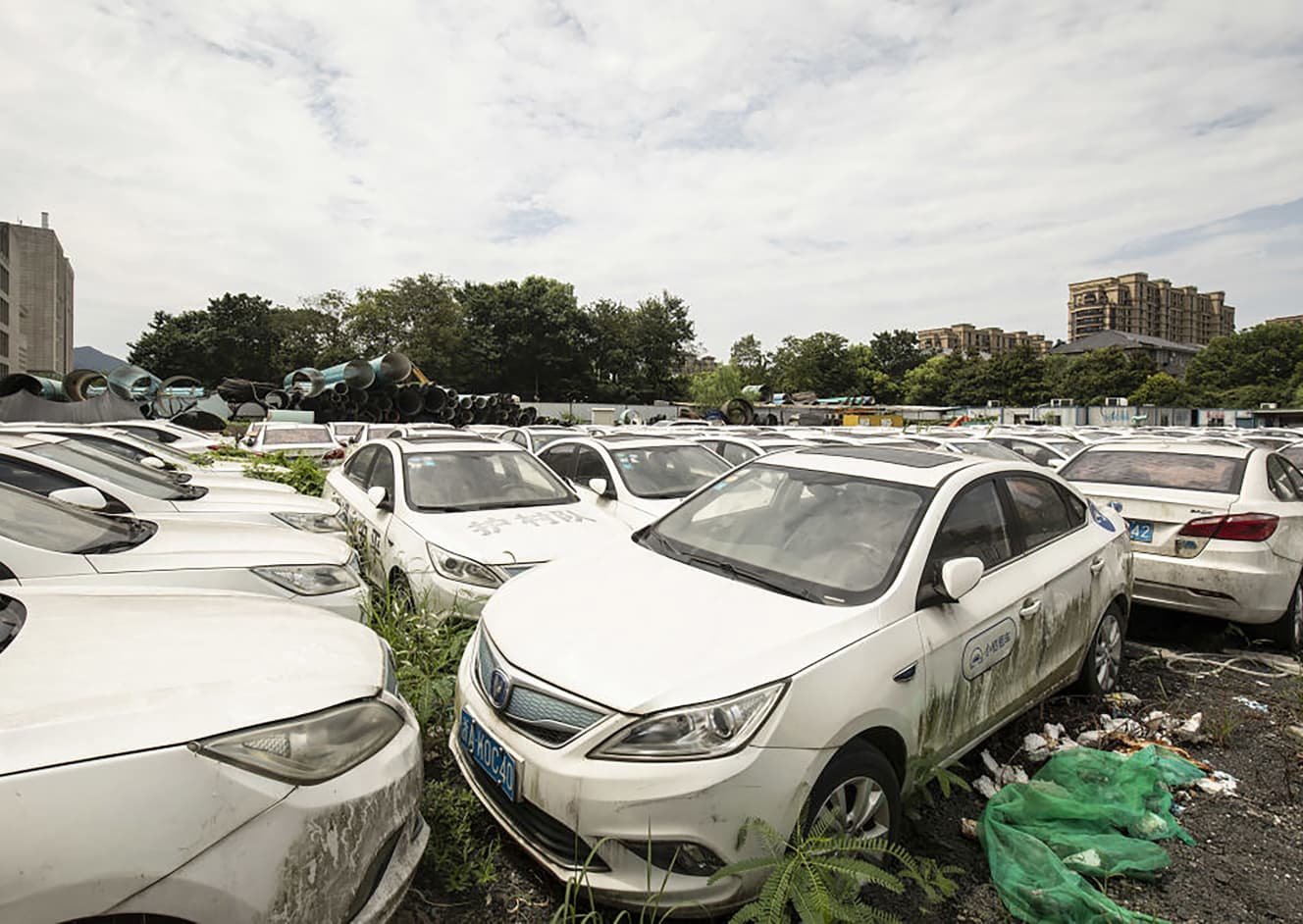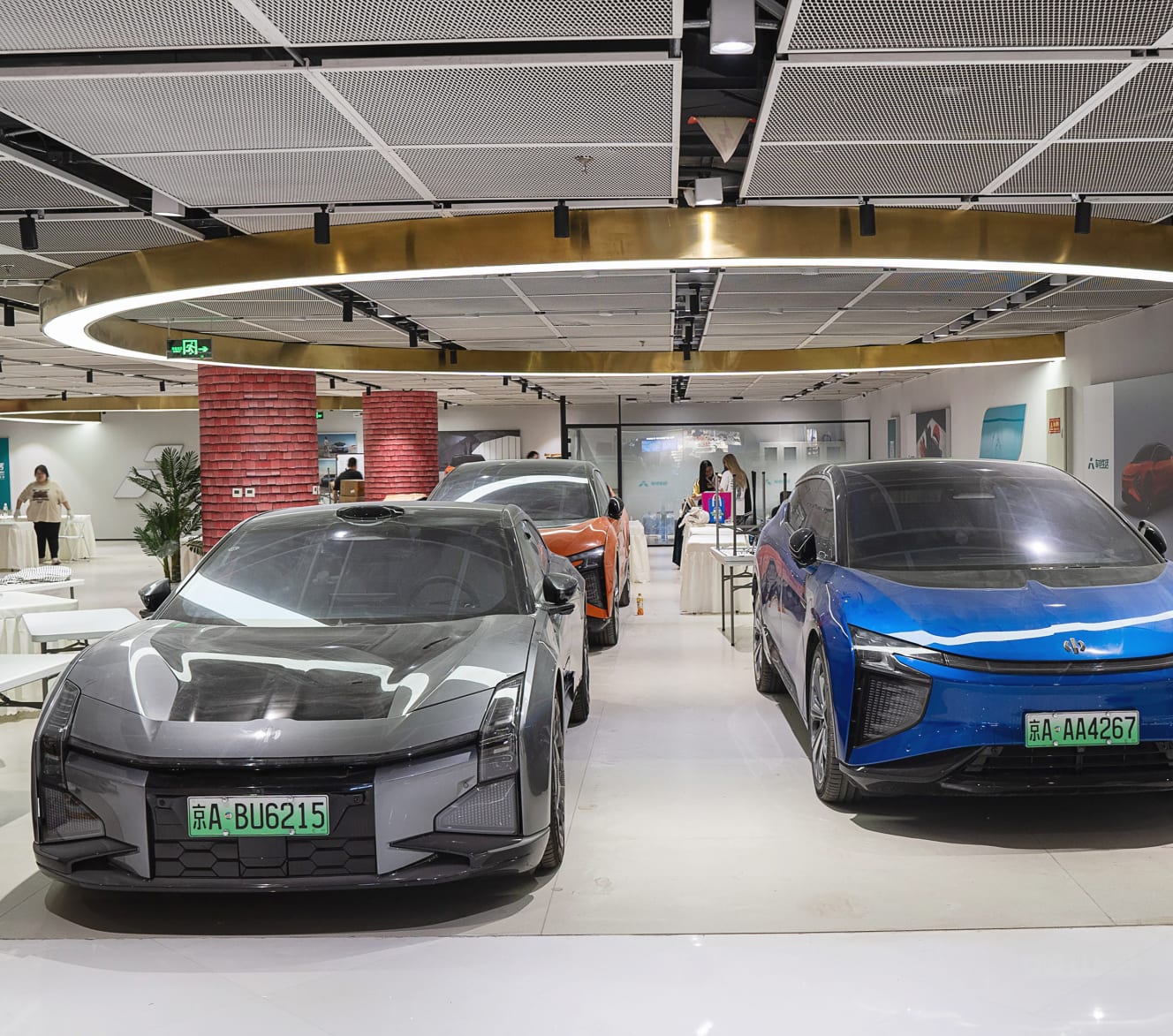Shocking Photos of the Graveyard of Increasing EVs Signal the Approaching Footsteps of China’s Bubble Collapse
Huge dumping grounds have emerged in the suburbs. More than 70 companies are going bankrupt one after another, fueled by the government's termination of subsidies

As far as the eye can see, cars, cars, cars—.
What appeared in the provincial capital of Hangzhou, Zhejiang Province, China, was a giant electric vehicle (EV) graveyard. There are about 200 to 300 abandoned EVs. The majority of them have punctured tires, rusted bodies, and are in a pitiful state.
Now, in China, the number of EVs is increasing. In local cities in Zhejiang Province, there is also a super large disposal site where 2,000 EVs have been abandoned, covering an area equivalent to two Tokyo Domes.
Why are “graveyards of EVs” increasing? Behind this lies the shadow of the Chinese EV market, which has been leading the world.
“In China, new energy vehicles (BEVs/FCEVs/PHEVs) have recorded the highest sales worldwide for nine consecutive years since 2015, with approximately 9.5 million units sold last year. At one point, there were about 300 EV manufacturers in the country.
However, in the past two to three years, the number of bankruptcies among these companies has sharply increased. The government, stating that the ‘period of market cultivation has ended,’ has gradually reduced preferential treatment for companies and subsidies for buyers since 2020. As a result, more than 70 EV manufacturers have gone bankrupt from 2021 to 2023, and it is expected that 70% will be eliminated by 2026.” (National newspaper, Economic Affairs Reporter)
The rush of bankruptcies is not solely due to government policies. Masahiro Miyazaki, an international political commentator familiar with the situation in China, analyzes the background as follows:
“There were too many companies entering the market seeking government incentives. Similar situations occurred in the semiconductor sector in the 2010s due to preferential policies. At that time, more than 1,200 companies, including fraudulent startups, emerged, and it was common for them to withdraw after receiving subsidies.
For example, the automobile manufacturer ‘WM Motor’ was established in 2015 under the sponsorship of the major IT company ‘Baidu.’ Despite being in the red, the founder received billions of yen in compensation, including stocks. This revelation contributed to its financial difficulties, leading to bankruptcy in October last year. Among Chinese executives, there are those who think only about their own profits, and there are few who have the ambition to engage in long-term manufacturing. This also contributed to the large number of bankruptcies.”
There are other reasons as well.
“EVs, which do not have engines or transmissions, have fewer parts compared to gasoline vehicles. Therefore, many companies may have entered the market with the misconception that ‘EVs are easy to make,’ and this could have led to their struggles. Additionally, in China, it is common not to establish dealership stores with maintenance facilities like those in Japan, but instead to provide display spaces in corners of shopping malls. Since the cost of opening a store is relatively low, this may have led to an increase in easy-entry companies.” (Chinese car researcher, Hiroto Kato)
While bankruptcies and the disposal of EVs are increasing, the EV market in China continues to grow. Some view this growth as success as long as it continues, but Miyazaki believes there is a possibility of struggling in overseas markets in the future.
“The growing number of Chinese-made EVs has raised international concerns, particularly regarding safety. The United States has announced plans to increase tariffs to 100%, four times the current rate, and Europe is following suit. If this happens, there is a possibility that in the future, these EVs may only sell in very few countries in Russia and Europe. Only a few companies are likely to survive until the end.”
The collapse of the ballooning EV bubble is becoming increasingly imminent.


From the May 31, 2024 issue of FRIDAY
PHOTO: Getty Images (1st - 2nd) Hiroto Kato (3rd)